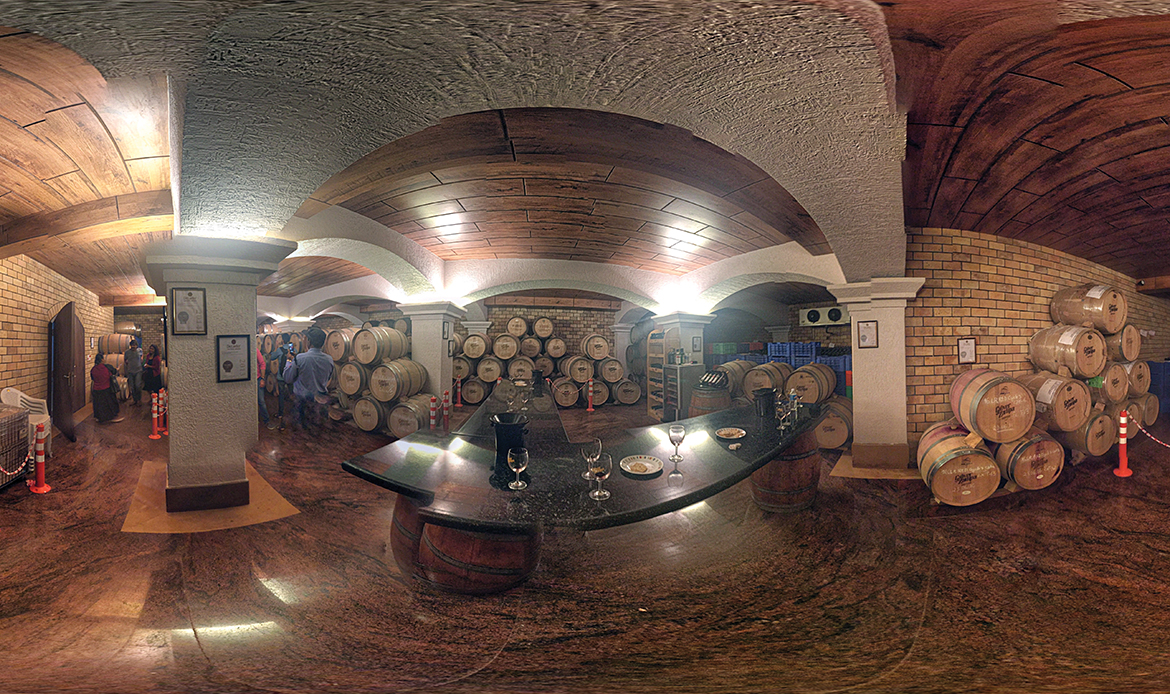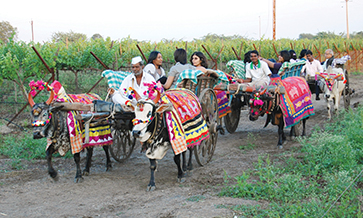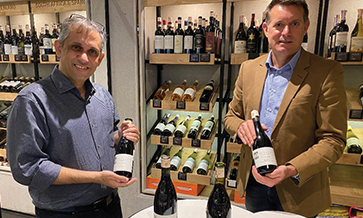The beloved drink of the gods has lately been sweeping through the curious minds of Indian consumers. Wine has become a status symbol for a few; to some others a mysterious drink that ought to be sniffed and swirled; to the well-travelled it brings nostalgia; and to the connoisseur a good wine is purely orgasmic.
With one of the world’s biggest growing markets, every wine brand is looking to obtaining a foothold in the country; the brands that have already successfully established themselves are reaping the benefits of catering to such a large populace despite astronomical taxes.
The alcohol-based beverage industry is estimated to have a cumulative annual growth rate of 11.5% over the last 3 years. Be it imported wine or Indian produce that has piqued the interest of drinkers, a dedicated wine list on the menu is becoming the norm. So what’s driving this change?
Evolving market
More than half of India’s population today makes up the youth, who run by their own rules. This cadre of gregarious millennials is not afraid of change – in fact they are disinterested with monotony and everything that’s banal. They are known for an interesting and unique approach to life and are more likely to spend on experiencing new brands and eye-catching labels.
The other important segment comprises of the GenX, more established in their careers, having higher household incomes, well settled with family, willing to spend more on better wines and stay loyal to their loved brands, be it wine or spirits.
There is also a small percentage of matures in India who drink wine, mostly for health benefits. Indians are evolving, making bolder and wiser choices.
Home-grown brands such as Sula, Fratelli and Grover Zampa have also strived hard and managed to elevate the quality of their wines to international standards. By utilising the expertise of the world famous wine consultant, Michel Rolland, Indian wines have garnered a place on the global wine map.
It’s also interesting to see how wine tourism has been developing in India. Beautiful locales, dedicated tasting rooms and grape stomping festivals – Indian wineries are becoming successful in selling experiences of ‘la vie en rose’ to the cohort of wine-minded consumers.
Social media has played a big role in consumption trends today – it is no surprise that most brands are using this route to gain visibility and increase sales. The reason I mention this is because the average millennial today checks his/her smartphone 43 times and spends 5.4 hours on social media per day.
Throw the whites, reds and the roses out there; make it look cool and trendy; and the millennials are sure to grab them!
Banish stereotypes
Wine must never be stereotyped. It is no more a snob’s drink – period! I’ve been living in the heart of the wine region of France for the last 2 years and have witnessed the changing trends. Everything is possible – be it drinking wine out of a can, adding a couple of ice cubes into your rose, or concocting sweet wine cocktails. Your palate is your laboratory.
‘Cupcake’, ‘Fat Bastard’, ‘Arrogant Frog’ are just a few of the quirky brands and labels the wine industry is coming up with. Another one that’s caught my attention is the innovative label of ‘19 Crimes’ – it is a virtual and augmented reality label, all one needs to do is download the app and watch the story unfold before pouring out the wine!
A glass of chilled rose or a white wine could do you a ton of good during hot Indian summers – in moderation of course. White wine varietals like Sauvignon Blanc, Chenin Blanc, Riesling, Gewurztraminer, Cotes de Gascogne and Sauternes are all excellent wines that wash down well with spicy Indian dishes.
Grenache, Sangiovese, Tempranillo or Merlot pair well with heavy dishes with stronger texture and intensity. However, it is a wrong notion that wine needs to be paired with food all the time. It can be enjoyed as a drink in itself.
This year in America we saw the shift towards easy drinking options like Prosecco, a sparkling wine from Italy, and shades of pink roses from France’s region of Provence. Both categories have gained popularity because of their bright, fresh flavors, bracing acidity and minerality.
Most popular brands of rose include Minuty from the Matton-Farnet family, Domaine de Tamary by Jean-Luc Zuger, and Miraval (owned by Brad Pitt and Angelina Jolie), all from south France’s Provence region. With so much happening in the world of wines, isn’t it time India adapted?
Knowledge deficit
In India, consumer knowledge of wine seems to be limited. There is a deficit when it comes to wine education, which is affecting consumption. Most consumers are intimidated and overwhelmed when they walk into a store or order wine at a restaurant.
It may seem very challenging when you take into account the complex labels with impossible names to pronounce – and let’s not even get started with the food pairing dilemma! As an industry it is the need of the hour to fill this gap and we can start by educating our staff.
There are a number of wine educational programmes run by companies across India. Encouraging staff to enroll in one of these will help them feel empowered and in turn increase wine sales. There is also a lot of information on the Internet today describing grape varieties, wine making, wine regions, wine styles etc.
Management has to take time to set educational goals and guide staff in increasing consumer awareness. Investing in a well-trained team is always beneficial to an establishment in the long run.
Everyone complains that selling wine in the Indian market can be quite tricky. Wines need good storage facilities and temperature-controlled warehouses. I would be stating the obvious if I mention that India lacks uniform duty and a tax structure.
Nonetheless we are witnessing wine consumption that has seen a growth of 25% annually. As an industry how can we cater to this burgeoning demand?
New wines, new tech
I’ve been speaking to wine producers time and again and they are more than keen to fly down to India with their wines and create experiences to enhance consumer knowledge. Hosting wine tasting, trade events and festivals in your establishment will contribute to your visibility – the fact that you provide consumers what they want is purely smart business.
Grand Cru’s like Château Brane-Cantenac, Château Kirwan, Château Rauzan-Segla are slowly trickling into the market.
The advent of the Coravin by Greg Lambrecht, which is a new needle-through-the-cork system has revolutionised the way we drink wine. It a bit of an investment at the beginning, but it helps pour wine from a bottle without pulling the cork, which means we can store used bottles of wines for longer periods without worrying about oxidation.
For establishments with higher footfalls, Enomatic systems would be the solution. These machines offer the possibility of a wide range of tasting experiences and help eliminate waste due to oxidation of wine.
Be it the old world wine producing countries like France, Italy, Spain and Germany or the new world countries such as Australia, America, India, Chile and Argentina, there is a treasure trove of wines to be discovered in our lifetimes.
In Indian society change in drinking habits is considerable and noticeable. Together as an industry we could help inculcate a wine culture and encourage drinking in moderation.
The wine legend Robert Mondavi once said, “Wine has been a part of civilised life for some 7,000 years. It is the only beverage that feeds the body, soul and spirit of man and at the same time stimulates the mind.” Food for thought!














